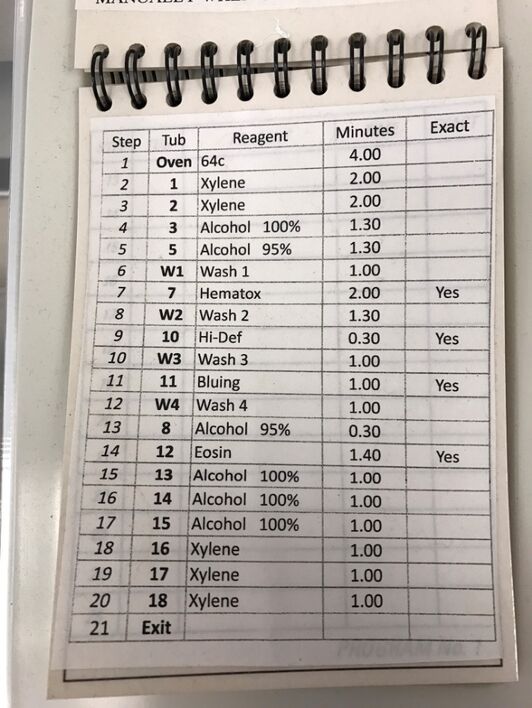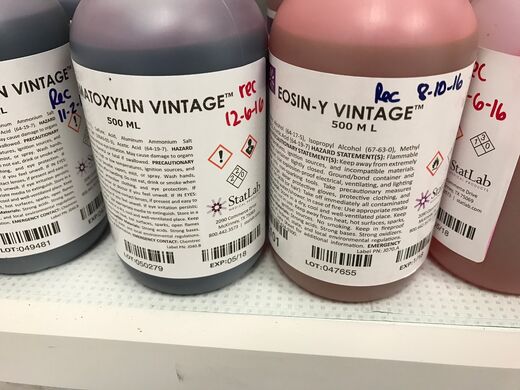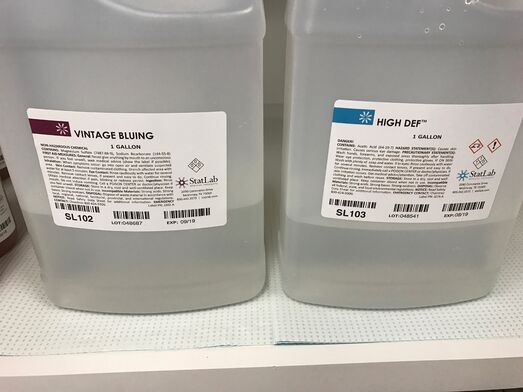In the course of interacting with many pathologists from around the world on social media, I have found that many laboratories still struggle with producing high quality H&E sections. H&E is King. It is the foundation of all modern anatomic pathology diagnosis. Before immunostains or molecular tests are considered, a good H&E section must be evaluated. Below are details for an H&E protocol that produces very good results in my experience (at least with skin biopsy specimens). Remember that in addition to using a good H&E stain protocol, you must start with good quality tissue that has been fixed in a sufficient quantity of 10% buffered formalin for an appropriate amount of time (ideally overnight, at least for larger pieces of tissue). Additionally, an experienced histotechnologist is crucial in providing correct orientation when embedding the tissue in paraffin and in obtaining tissue sections of appropriate thickness and without significant cutting artifacts. Investing time and effort into these steps should always come first.
The protocol shown below is run on an automated staining instrument, but I presume it could be adapted to manual H&E staining. The protocol uses reagents from StatLab (I have no financial conflict of interest with this company; I just like the result of this H&E protocol and therefore I'm sharing the info here for others to learn from). The particular StatLab reagents used include: "Hematoxylin Vintage", "Eosin-Y Vintage", "Vintage Bluing" (contains magnesium sulfate and sodium bicarbonate per the label, but the amounts/percentages are not specified), and "High Def" (contains acetic acid per the label, but the amount/percentage is not specified). Images below show detail of the reagent containers. Generic xylene and alcohol (isopropanol) can be used. The wash steps use gently running clean tap water - using running water rather than a still bath helps ensure the water is always clean. The quality of the H&E can suffer pretty badly from something as simple as a wash step using water that isn't clean enough. If you can't get gently running water, be sure to change the water in the wash steps very often.
- Jerad M. Gardner, MD (1/27/2017)


